Yoga Blog
Nourishing Your Mind: Foods and Yoga Practices for Calm and Well-being
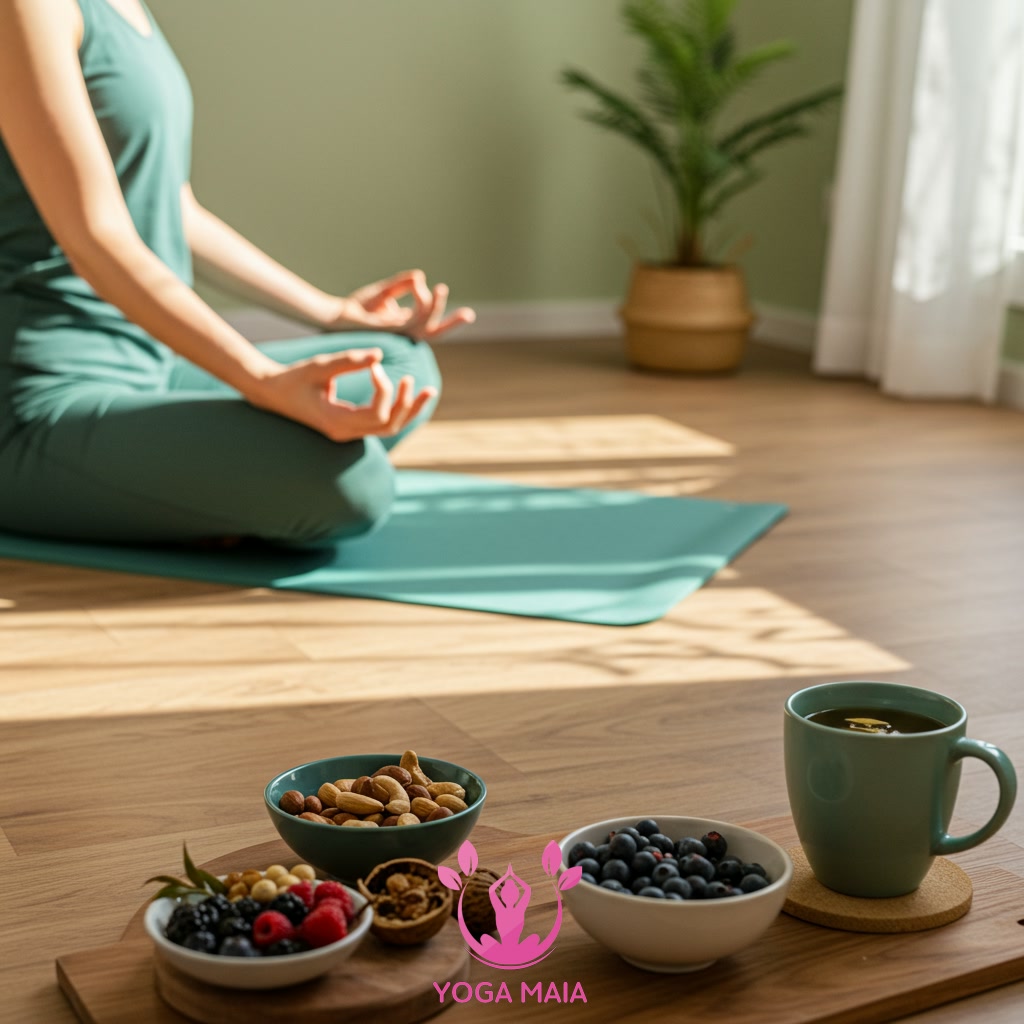
This content explores the connection between nutrition and mental well-being, alongside the benefits of specific yoga practices. It delves into how certain foods can support brain health and promote a sense of calm. Furthermore, it highlights various yoga techniques designed to enhance overall well-being and reduce stress. The aim is to provide practical methods for nourishing the mind through integrated dietary and yoga approaches.
Table of Contents
- Section 1: Introduction: The Mind-Body Connection for Calm
- Section 2: Nourishing Your Brain: Foods for Enhanced Mental Well-being
- Section 3: Yoga Practices for Inner Peace and Stress Reduction
- Section 4: Integrating Diet and Yoga: A Holistic Approach to Calm
- Section 5: Practical Tips for Daily Nourishment and Yoga Routine
- Section 6: Conclusion: Cultivating Lasting Calm and Well-being
Section 1: Introduction: The Mind-Body Connection for Calm
It is widely understood that our mind and body are not separate entities but rather deeply interconnected. This fundamental link, often referred to as the mind-body connection, plays a crucial role in our overall state of being, particularly influencing our sense of calm and well-being. When one is out of balance, the other is often affected. Stress, for instance, manifests not only mentally but also physically. Conversely, physical practices and nourishment can profoundly impact our mental state. This document explores practical ways to strengthen this vital connection, focusing on how specific dietary choices and gentle yoga practices can work together to foster inner peace and resilience.
 Introduction: The Mind-Body Connection for Calm
Introduction: The Mind-Body Connection for Calm
Section 2: Nourishing Your Brain: Foods for Enhanced Mental Well-being
Building on the understanding of the mind-body connection, let’s explore how specific foods play a vital role in enhancing mental well-being. Just as our bodies require fuel, our brains thrive on nutrients. Consuming a diet rich in omega-3 fatty acids, found in fish and walnuts, supports brain structure and function. Antioxidants from colorful fruits and vegetables protect brain cells from damage. Complex carbohydrates provide stable energy, preventing mood swings, while B vitamins are essential for neurotransmitter production, impacting mood and cognitive processes. By making conscious food choices, we directly nourish our brain, fostering clarity, emotional stability, and overall mental resilience.
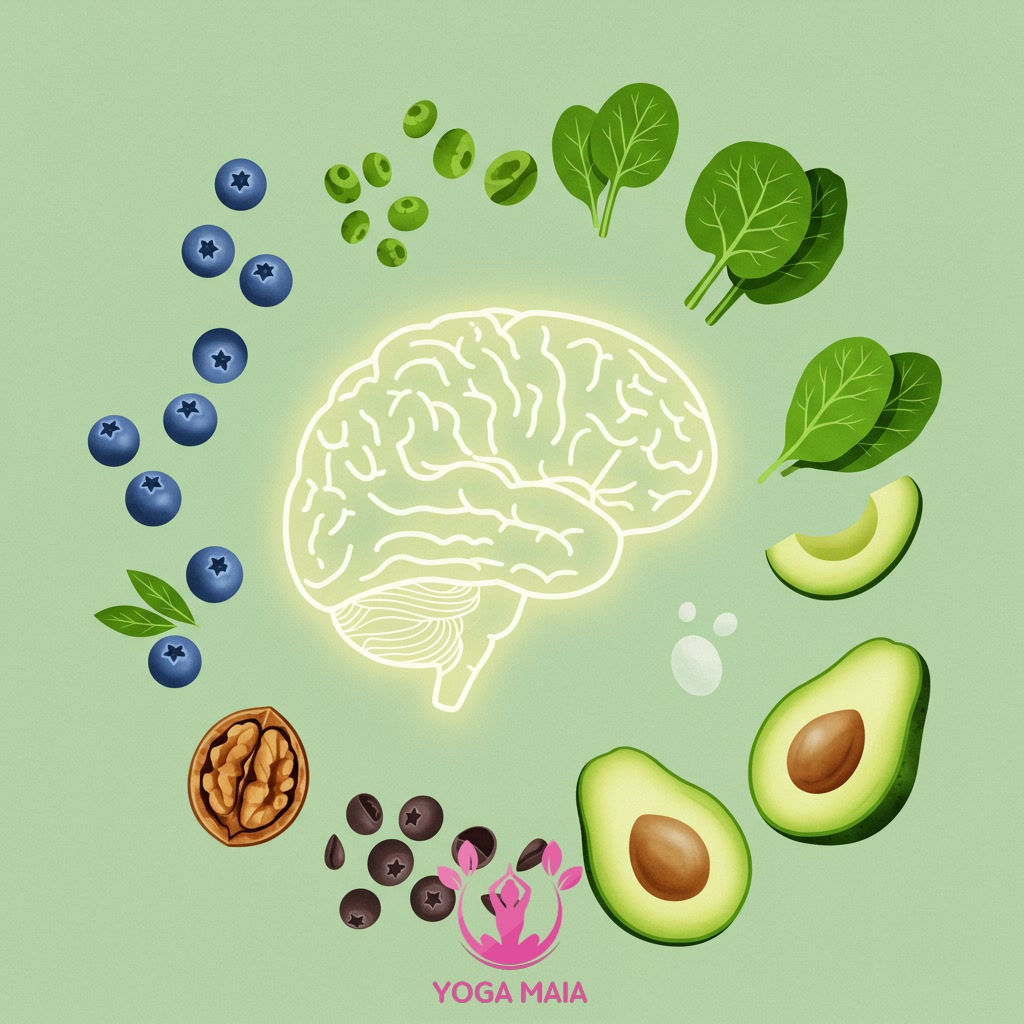 Nourishing Your Brain: Foods for Enhanced Mental Well-being
Nourishing Your Brain: Foods for Enhanced Mental Well-being
Section 3: Yoga Practices for Inner Peace and Stress Reduction
Building on the role of nutrition, integrating specific yoga practices offers a powerful pathway to cultivating inner peace and reducing stress. Yoga is far more than just physical postures; it encompasses breathing techniques (pranayama) and meditation, all designed to harmonize the mind and body. Gentle movements and mindful breathing activate the parasympathetic nervous system, counteracting the ‘fight or flight’ response associated with stress. Regular practice helps release physical tension held in the body, which is often linked to mental stress. By focusing on the present moment through movement and breath, yoga provides a respite from anxious thoughts and promotes a state of calm awareness. This consistent effort builds resilience against daily pressures, fostering a lasting sense of tranquility from within.
 Yoga Practices for Inner Peace and Stress Reduction
Yoga Practices for Inner Peace and Stress Reduction
Section 4: Integrating Diet and Yoga: A Holistic Approach to Calm
Building on the foundations of beneficial nutrition and the principles of yoga, integrating these two practices offers a truly holistic pathway to cultivating calm and enhancing overall well-being. This synergistic approach acknowledges the profound connection between what we consume and how our mind and body feel, alongside the power of movement and breath to influence our internal state. By consciously choosing foods that nourish the brain and nervous system, we create a supportive physical environment for yoga practice. Simultaneously, consistent yoga helps reduce stress that can impede digestion and nutrient absorption, fostering a more receptive state for the benefits of our diet. Combining mindful eating with mindful movement allows us to address mental well-being from multiple angles, fostering a deeper sense of peace and resilience.
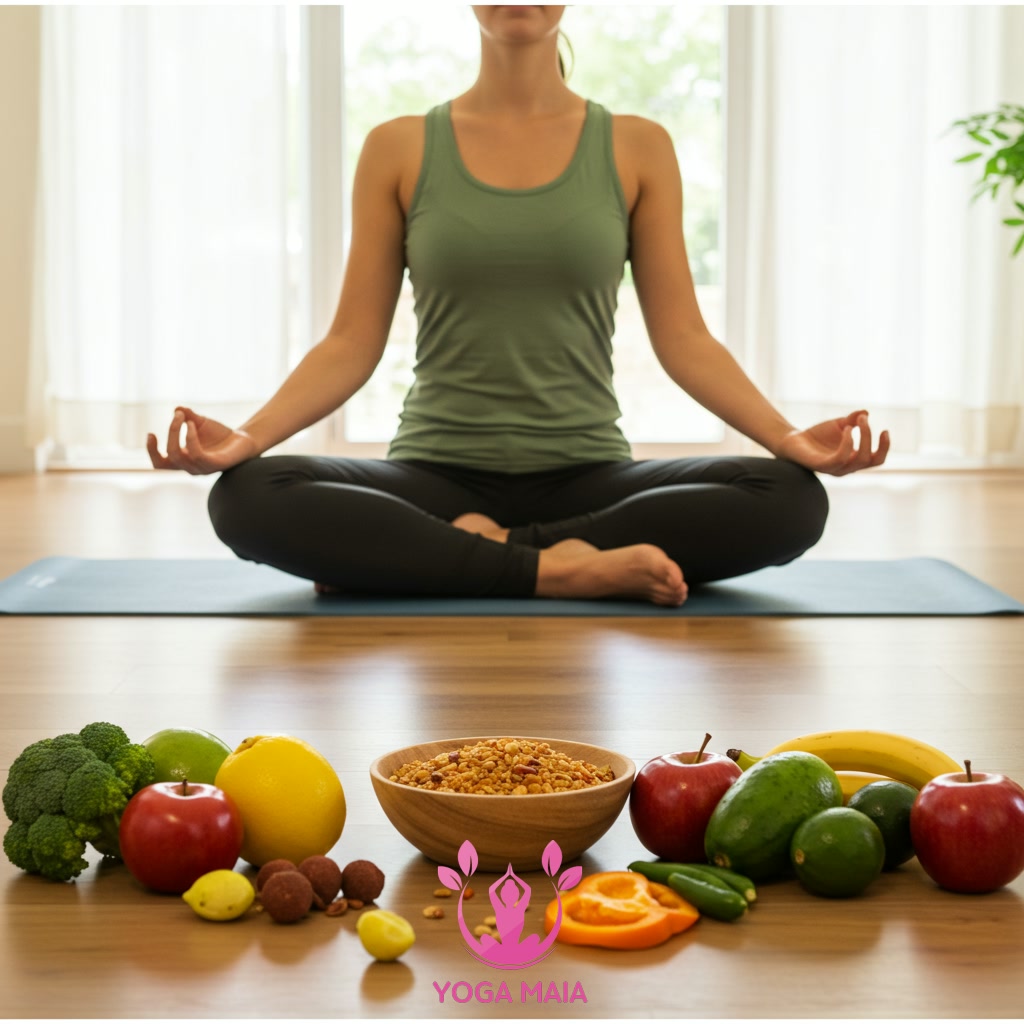 Integrating Diet and Yoga: A Holistic Approach to Calm
Integrating Diet and Yoga: A Holistic Approach to Calm
Section 5: Practical Tips for Daily Nourishment and Yoga Routine
Integrating nourishing foods and calming yoga into your daily life doesn’t require drastic changes. Start small: perhaps add a handful of walnuts to your breakfast or practice five minutes of gentle stretching and deep breathing upon waking. Plan simple, balanced meals rich in omega-3s, antioxidants, and complex carbohydrates, focusing on whole foods that support brain health. Schedule your yoga practice, even if it’s just a short sequence or a few minutes of meditation, treating it as a non-negotiable appointment with yourself. Consistency is key; aim for regularity rather than perfection. Listen to your body and mind, adjusting your routine as needed to cultivate a sustainable path towards enhanced calm and well-being.
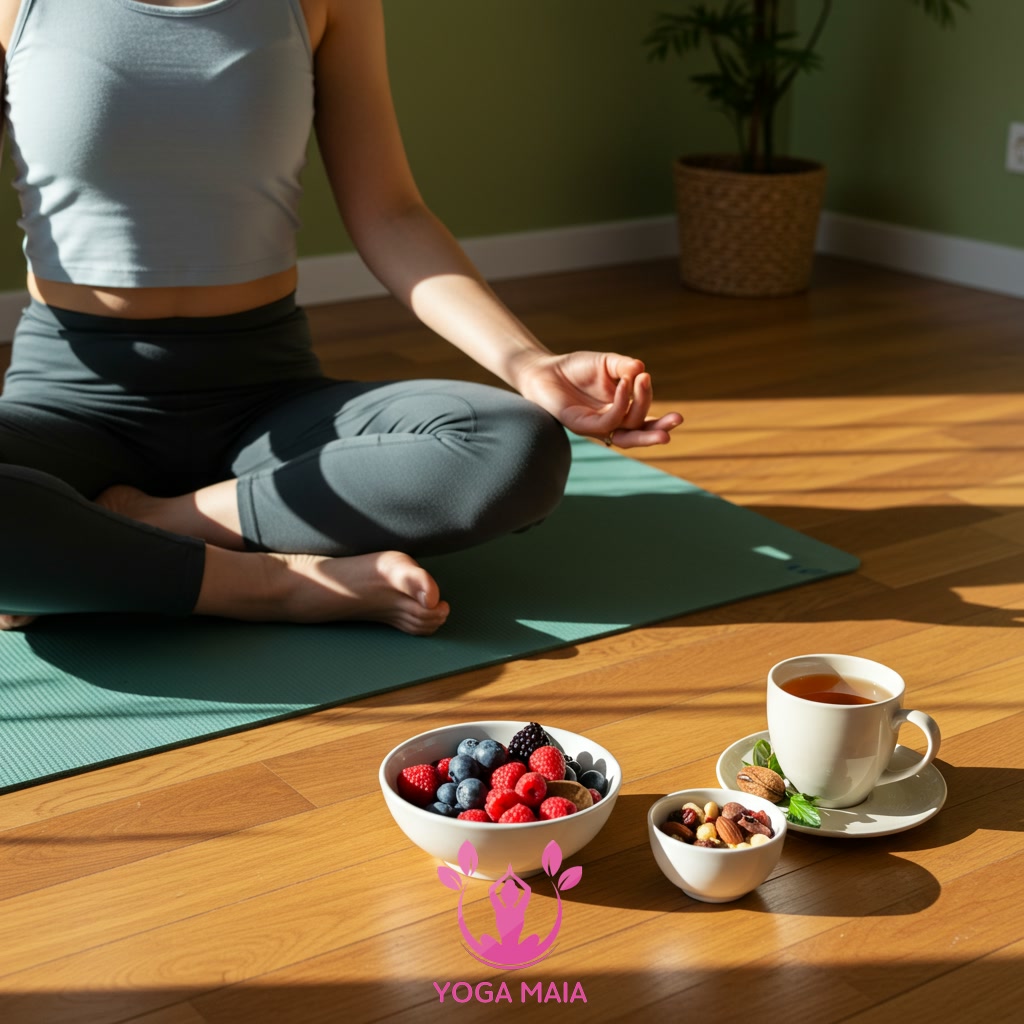 Practical Tips for Daily Nourishment and Yoga Routine
Practical Tips for Daily Nourishment and Yoga Routine
Section 6: Conclusion: Cultivating Lasting Calm and Well-being
Cultivating lasting calm and well-being is an ongoing journey, not a destination. As you’ve seen, small, consistent steps in integrating nourishing foods and calming yoga practices into your routine can build a strong foundation for mental resilience. It’s about making conscious choices that support your brain and nervous system, whether it’s selecting foods rich in Omega-3s or taking a few moments for mindful breathing or gentle movement. Embrace this path of self-care with patience and self-compassion. By nurturing your body with wholesome nutrition and calming your mind through the wisdom of yoga, you empower yourself to navigate life’s challenges with greater ease, fostering a sustainable state of peace and vibrant health from within.
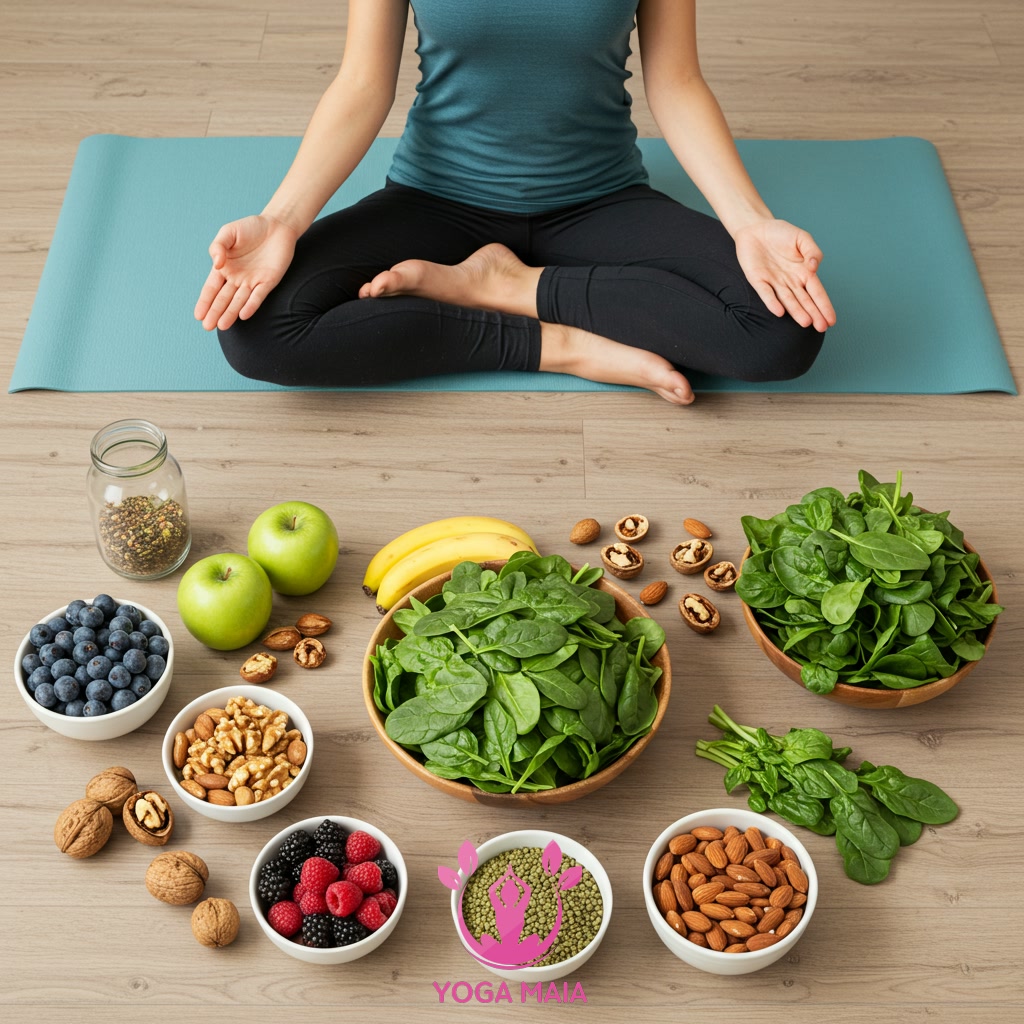 Conclusion: Cultivating Lasting Calm and Well-being
Conclusion: Cultivating Lasting Calm and Well-being












